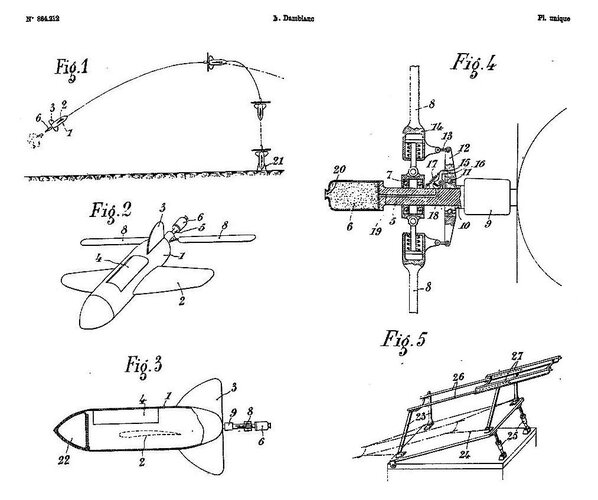klem
I really should change my personal text
- Joined
- 7 March 2015
- Messages
- 707
- Reaction score
- 1,530
Louis Damblanc, French pioneer, passionate about aeronautics and space. He has been involved in space exploration since 1913, and from 1917 onwards he worked for the Inventions Directorate of the Ministry of Defence. After the armistice, he created his own Bureau d'Etudes Aéronautiques in Paris. At the beginning of the 1930s, he began to study solid rockets. He was awarded the REP-Hirsch International Astronautical Prize in 1935 for his work. His best known contribution to rocket improvement was the development of multi-stage rockets. His stage separation device was a world first. After the Second World War, he worked for several years as a scientific adviser to Snecma. At the end of 1939, Damblanc filed a patent on aerial torpedoes. This device combined rocket propulsion with a vertical landing technique using an autogyro type rotary propeller. Contrary to what its name might suggest, this aerial torpedo is multifunctional: "The torpedo thus constituted can be used, with advantage, for the transport of foodstuffs, ammunition, mail, goods, etc". "The device can also be used as an explosive torpedo and in this case, it hardly sinks into the ground, the effect of the explosion and the blast on the ground are particularly important, especially the horizontal blast", according to Damblanc. What is certain is that the device of the aerial torpedo invented by Damblanc or his idea are not forgotten because it is mentioned in the documents of the DCCAN (Direction centrale des constructions et armes navales) that five experimental autogyre torpedoes were built and three tested during the year 1949.it is very likely that his achievements are directly inspired by his work

